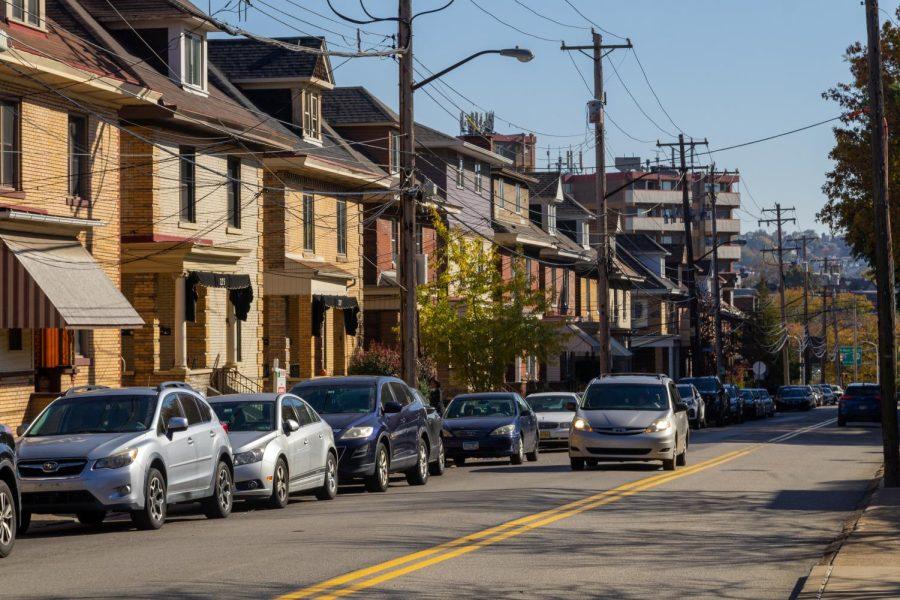City Council approves Oakland zoning changes
John Blair | Senior Staff Photographer
Halket Street in Oakland.
March 1, 2023
Pittsburgh City Council gave final approval to an Oakland rezoning ordinance on Tuesday, ending three years of public debate about the proposal.
The ordinance will create three new zoning districts in Oakland — an urban center-employment district, a residential-mixed use district and an urban center-residential mixed use district. The ordinance passed unanimously, with all nine Council members voting to approve the zoning changes.
Proponents of the zoning changes hope they will improve housing and employment activities in Oakland. The changes come as part of the Oakland Plan, the City’s plan to “grow housing and job opportunities” as well as “increase livability” and “address inequities” in the neighborhood.
Andrea Boykowycz, interim director of the Oakland Planning and Development Corporation, said the rezoning ordinance doesn’t automatically mean Oakland will see changes overnight.
“It isn’t to say that like, starting tomorrow, we’re gonna bulldoze everything in Central Oakland and start building stuff which is 80 or 100 feet tall,” Boykowycz said. “It’s more like, this is what you could do in here. Here are things that individual projects could look like.”
The residential-mixed use district will permit more multi-unit housing, including affordable housing, in Central Oakland between Louisa and Dawson Streets — such as turning a single-family home into an apartment building, Boykowycz said.
The urban center-employment district will increase allowed building height, create new sidewalk standards and limit residential development between Forbes and Fifth Avenue. And the urban center-residential mixed use district will allow for mixed commercial and residential development surrounding the Boulevard of the Allies.
The City Council gave preliminary approval to the legislation last week with two amendments — one which raised the amount of educational classroom space in the urban center-employment district and another which raised the maximum height permitted in the same district.
Now that the rezoning proposal has passed, Boykowycz said the challenge is figuring out how to build housing in Oakland that fits the needs of students — that is dense, affordable and close to campus.
“That’s the Holy Grail,” Boykowycz said.








